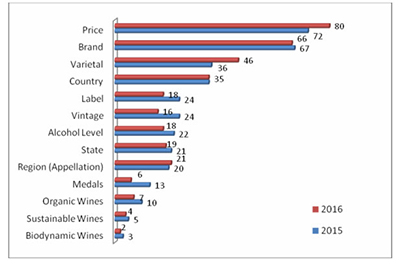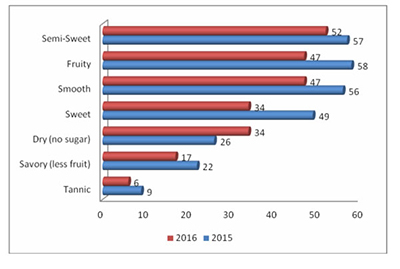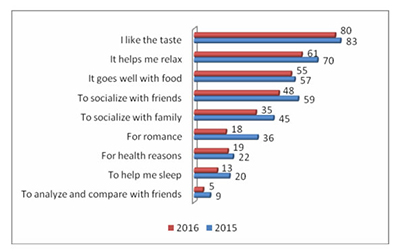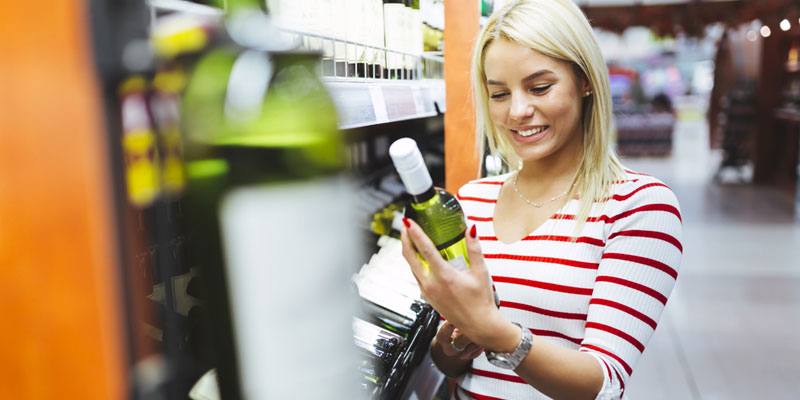This month, Sonoma State University released the results of its annual survey on American wine preferences. Americans listed price, brand, and varietal as the top deciding factors in their wine choices. And from 2015 to 2016, their interest in whether their wines had won any medals fell from 13 percent to just six percent. For the third year in a row, these results reinforced what research organizations like Nielsen and publications like this one have been saying for years: The wine industry — the wine brain trust, if you will — is out of touch with the tastes of normal consumers. 
As the leading digital publisher in the wine, beer, and spirits space, we see our mission as speaking to the 90 percent of consumers who are often ignored. It is in this capacity that we’ve been uniquely positioned to see the division between the wine industry and the American consumer. In fact, it’s one of the main reasons we started VinePair.
If you talk to most members of the industry, they will tell you that current wine trends point to “natural wine,” orange wine, and “grower Champagne” as the future. These topics have become ubiquitous in the industry. They’ve become so ubiquitous, in fact, that we’ve been asked by producers from the most famous wine regions in the world — Burgundy, Barolo, Bordeaux — if we think they should be making a natural wine to keep up with demand.
What demand? The surveys show what our readership makes clear to us every day: that despite the industry craze, the demand from American consumers is not really there in the first place.
That makes sense for a lot of reasons. Natural wine is pretty hard to find unless you live in a major city, and even then, you’re only likely to find it if you head to a restaurant or wine bar that’s specializing in it. The same is true for orange wine. This means that most people who are interested in wine, even obsessed with it, do not have access to these products. We at VinePair enjoy natural and orange wines, but we’re also very conscious of how much we cover these styles, because we recognize that the majority of our readers can’t taste them, and it’s frustrating to read about things you have no access to, especially if you’re trying to educate yourself.
Obscure grapes and regions are in the same camp. They are very popular with a small group of wine professionals, but they remain virtually unknown by consumers. The idea that Napa is dead, or that we’ve moved on from Bordeaux, may make sense in urban environments, but year after year, surveys come up with the same results: Cabernet, Merlot, Pinot Noir, Chardonnay, and Pinot Grigio are the grapes consumers choose. These regions aren’t going anywhere.
Or take, for example, the data that popped up last summer that seemed to suggest that industry insider tastes were actually influencing consumer demand. An app called Delectable claimed to have hard evidence that the industry reverence for “grower Champagnes” was a leading indicator of broader consumer appeal. But according to Impact Databank, exports of grower Champagne only represented three percent of the 20,508,784 Champagne bottles shipped to the U.S. last year. Trendy yes, but hardly a trend.
I’m not trying to argue that the customer is always right. Research also consistently shows that people who don’t understand wine will choose lesser wines; indeed, VinePair is a site dedicated to educating and informing the public. But we are a site that embraces the lifestyle of drinking, which means we believe that drinking – and learning about drinking – should be fun. To this end, we are committed to a descriptive approach to wine appreciation. We want to understand where our readers are coming from. We want to take them on a journey. And some of our readers know what they like, and that’s O.K., too. For us, it is all about teaching people in a way that respects, even pays homage to, their tastes, rather than shaming them out of them.
 If industry specialists weren’t so disconnected, they may have noticed something I’ve long observed – that though people report not liking tannic wine (as in the survey), they actually like it a lot more than they think they do. The experience consumers are looking for when they report enjoying dry wine is actually the experience created by tannins. But this has to be explained to drinkers in a way they can actually digest and understand.
If industry specialists weren’t so disconnected, they may have noticed something I’ve long observed – that though people report not liking tannic wine (as in the survey), they actually like it a lot more than they think they do. The experience consumers are looking for when they report enjoying dry wine is actually the experience created by tannins. But this has to be explained to drinkers in a way they can actually digest and understand.
Most people drink wine to relax and have a good time, which the data from the Sonoma State University survey also strongly supports. The most important thing to consumers is whether or not they like the wine they’re drinking. It’s not something anyone wants to struggle with, or overanalyze. One day, maybe soon, these consumers may fall in love with the same trends the industry is currently obsessed with, but to get there, the industry has to become a lot more accessible, open, and willing to help. The world of wine shouldn’t be a club where only those who talk the talk have access. If it continues to be that way, then we’ll continue to have a disconnect between the people who sell wine and the majority of people who buy it.

